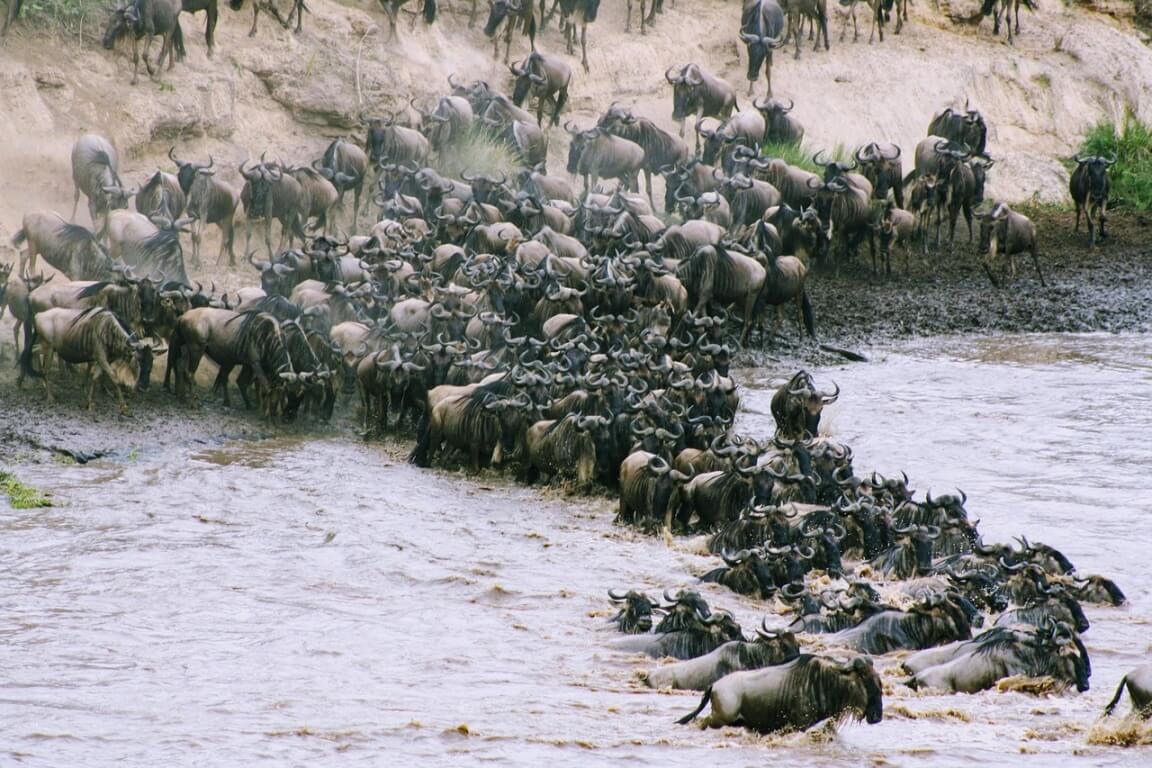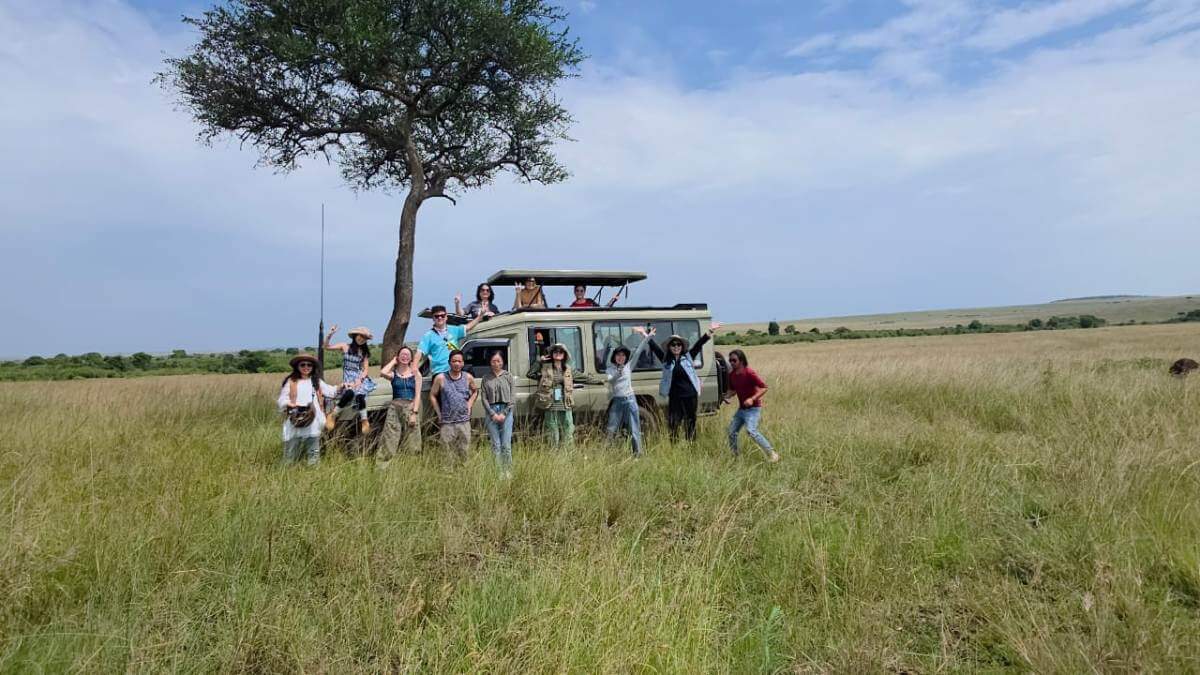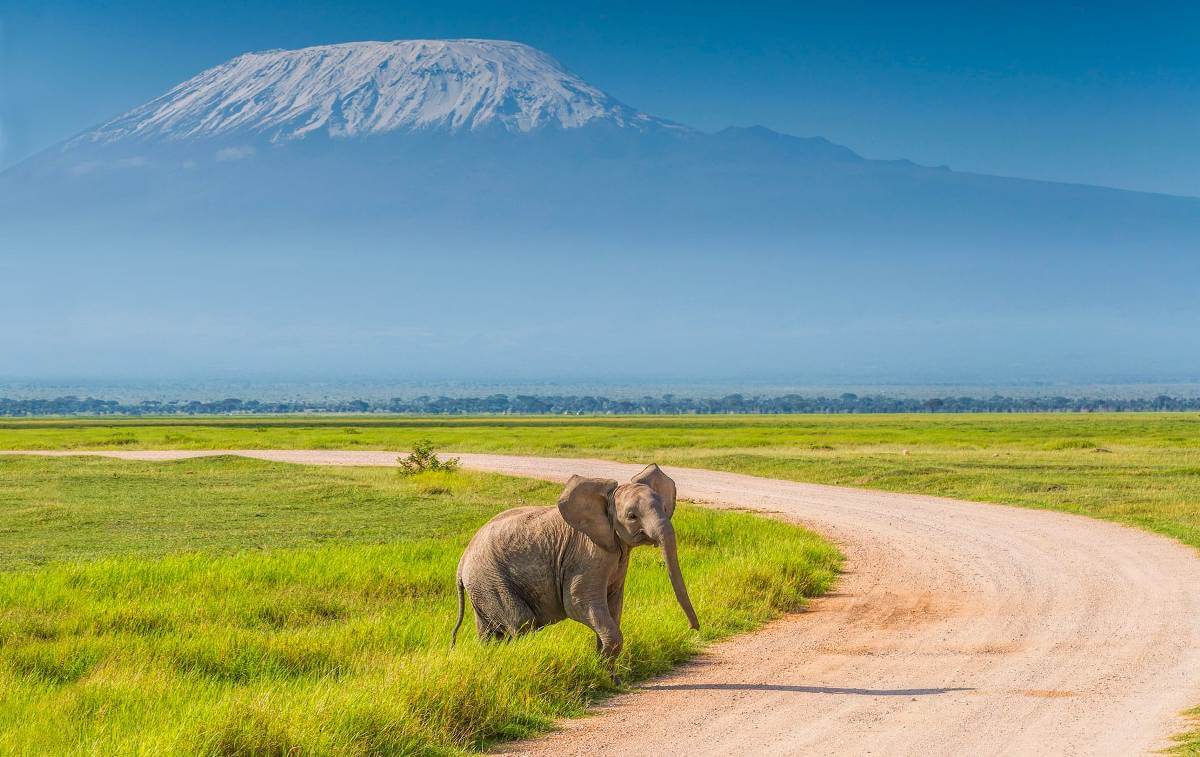Cheapest and Most Scenic Months to Travel
Kenya is one of the most iconic safari destinations in the world. From the golden plains of the Maasai Mara to the towering peak of Mount Kilimanjaro seen from Amboseli, it offers travelers a perfect mix of wildlife, culture, and breathtaking landscapes.
But if you’re planning a safari from the United States, one question comes up often — when is the best time to visit Kenya for safari?
The answer depends on what you want to experience, how much you want to spend, and how comfortable you want your trip to be. Let’s explore the seasons, weather, wildlife highlights, and money-saving tips to help you plan your dream safari in Kenya.
Understanding Kenya’s Seasons
Kenya sits along the equator, so it doesn’t have four distinct seasons like the U.S. Instead, it experiences wet and dry seasons. The weather changes affect both wildlife movement and safari costs.
1. The Dry Season (June to October)
This is considered the peak safari season in Kenya. Days are sunny, rain is rare, and the grass is short — perfect for spotting animals.
- Wildlife: The dry season coincides with the famous Great Wildebeest Migration in the Maasai Mara. Millions of wildebeests and zebras cross from Tanzania’s Serengeti into Kenya, followed closely by lions, cheetahs, and crocodiles.
- Weather: Expect warm days and cool nights. Temperatures average around 75–80°F (24–27°C) during the day.
- Best Parks: Maasai Mara, Amboseli, Samburu, Tsavo East, Tsavo West.
- Pros: Excellent wildlife viewing, clear skies for photography, minimal mosquitoes.
- Cons: Higher prices and more tourists.
If you want classic African safari scenes, this is the best time to visit. You can book your safari here.

2. The Short Rains (November to December)
Right after the dry season, Kenya experiences short, light showers. Don’t let the word rain discourage you — it often rains for just an hour or two in the late afternoon.
- Wildlife: Animals are still easy to spot, and the parks are lush and green. It’s a beautiful time for photographers.
- Weather: Temperatures range between 77–84°F (25–29°C), with occasional rain showers.
- Best Parks: Amboseli, Lake Nakuru, and Tsavo East are stunning during this period.
- Pros: Fewer crowds and slightly lower prices than the dry season.
- Cons: Some dirt roads can become muddy and challenging for driving.
If you’re looking for a balance between good wildlife viewing and affordability, this is a great time to go.
3. The Green Season (January to March)
This is a wonderful time to visit if you prefer a peaceful safari. The short rains have ended, and the country is vibrant and full of life.
- Wildlife: Calving season! You’ll see baby animals everywhere, especially in the Maasai Mara and Amboseli. Predators are more active as they hunt the young.
- Weather: Mostly dry, sunny, and warm — perfect for outdoor adventures.
- Best Parks: Maasai Mara, Amboseli, and Samburu are at their best.
- Pros: Fewer tourists, lower prices, great birdwatching.
- Cons: The grass can be taller, making some animals slightly harder to spot.
For travelers who want a relaxed safari without crowds, January to March is ideal.
4. The Long Rains (April to May)
This is the low season in Kenya. Heavy rains fall across the country, and some lodges close for maintenance. However, it has unique benefits if you’re on a budget.
- Wildlife: Animals are still there, and you’ll often have entire parks to yourself.
- Weather: Expect daily afternoon or evening showers, but mornings are often clear.
- Best Parks: Samburu and Amboseli, where the terrain drains quickly.
- Pros: Lowest prices of the year, few tourists, lush green landscapes.
- Cons: Some roads become inaccessible, and a few camps may close.
If you’re after an affordable safari and don’t mind a bit of rain, this is your moment.
Best Time to Visit Kenya for Wildlife Viewing
If your goal is to see as much wildlife as possible, timing matters. Here’s a quick guide to the best wildlife experiences by month:
| Month | Highlights |
|---|---|
| January – March | Calving season in Maasai Mara and Amboseli; great for predators. |
| April – May | Lush scenery, birdwatching, fewer crowds, lower prices. |
| June – July | Start of dry season; wildlife gathers near rivers and waterholes. |
| August – October | Great Wildebeest Migration in Maasai Mara; prime safari months. |
| November – December | Short rains; green landscapes and newborn animals. |
In summary:
- For Big Five spotting (lion, leopard, rhino, elephant, buffalo): June–October.
- For birdwatching and photography: November–March.
- For budget travelers: April–May

Tourists in a Safari Landcruiser
Best Time for Beach and Safari Combos
Kenya’s coast — including Diani Beach, Watamu, and Lamu — is a perfect add-on after your safari.
- Best months for beach weather: December to March, and July to October.
- During these months, the Indian Ocean is calm, clear, and warm, making it ideal for snorkeling and diving.
- Many travelers combine a few days in the Maasai Mara with beach relaxation in Diani.
If you’re coming from the U.S., you can easily fly into Nairobi (NBO) for the safari and then take a short flight to the coast afterward. Pleasant Adventures can assist you with this here.
Cheapest Months to Visit Kenya
Let’s talk budget — because safaris can vary a lot in price.
The cheapest months to visit Kenya are:
- April, May, and November.
During these months:
- Lodges offer up to 40% discounts.
- Park fees and flight prices are generally lower.
- You can enjoy high-end lodges at mid-range rates.
If you’re a U.S. traveler looking to stretch your dollar, these months are excellent for booking.
When to Avoid Visiting (If You Want Comfort)
Although Kenya is beautiful all year, some months can be less comfortable for travelers:
- April and May bring the heaviest rains. Some roads in the Mara or Tsavo may become challenging.
- Late October and early November can be unpredictable weather-wise.
If this is your first safari and you want a smooth experience, the dry season (June–October) is your safest bet.
Tips for Planning Your Safari from the USA
Here are a few simple tips to help you plan a seamless safari trip from the United States.
1. Book Early for Peak Season
If you’re visiting between June and October, book your safari 6–12 months in advance.
Lodges in Maasai Mara and Amboseli fill up fast, especially during the Great Migration.
2. Choose the Right Safari Company
Look for licensed tour operators like Pleasant Adventures, who specialize in Kenya safaris.
They can help you pick destinations that fit your budget, handle park fees, and arrange airport transfers.
3. Combine Parks for a Richer Experience
Instead of visiting just one park, combine:
- Maasai Mara (for big cats and migration)
- Lake Nakuru (for rhinos and flamingos)
- Amboseli (for elephants and Kilimanjaro views)
This gives you a more complete Kenyan experience.
4. Pack for the Weather
- Dry season: Light clothing, sunblock, hat, and a warm jacket for chilly mornings.
- Rainy season: Waterproof shoes, light raincoat, and insect repellent.
5. Don’t Forget Travel Insurance
Safaris often involve bush flights and 4×4 rides. A good travel insurance plan gives peace of mind.
Why Kenya Is Worth Visiting Any Time of Year
Even though the dry season gets the most attention, Kenya’s charm never fades.
- During the wet season, the landscapes glow green and the air feels fresh.
- In the dry months, animals gather around watering holes, creating dramatic scenes.
- In the calving season, the savannah is alive with newborns and predators on the hunt.
No matter when you go, you’ll witness something unforgettable.
Example Safari Itinerary by Season
Here’s how a typical 7-day safari could look depending on when you travel:
Dry Season Itinerary (July–October)
- Day 1: Arrive in Nairobi, overnight stay.
- Day 2–4: Maasai Mara for the Great Migration.
- Day 5: Lake Nakuru for flamingos and rhinos.
- Day 6–7: Amboseli for elephants and Mount Kilimanjaro views.
Green Season Itinerary (January–March)
- Day 1: Arrive in Nairobi, visit Giraffe Centre.
- Day 2–3: Amboseli for calving elephants.
- Day 4–5: Samburu for rare species.
- Day 6–7: Fly to Diani Beach for relaxation.
Final Thoughts
Kenya is a year-round destination. Each season has its own rhythm, color, and charm.
If you want the best wildlife viewing and weather, visit between June and October.
If you want the best prices and fewer crowds, go between April and May.
And if you want lush scenery and baby animals, travel from January to March.
No matter when you go, Kenya’s magic stays the same — vast open savannahs, thundering herds, golden sunsets, and the unforgettable roar of lions under the African sky.
So, pack your bags, charge your camera, and get ready for a journey that will stay in your heart forever.




